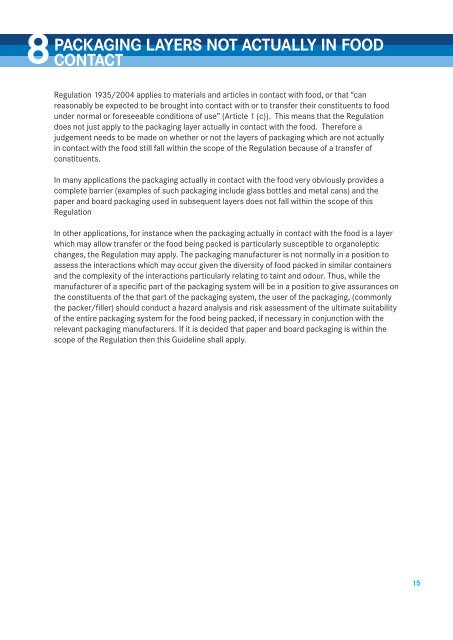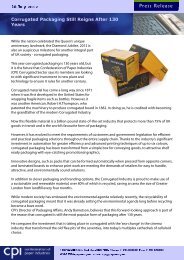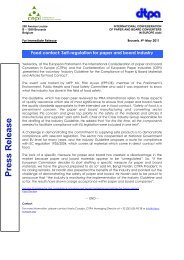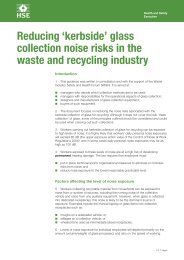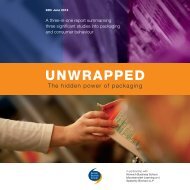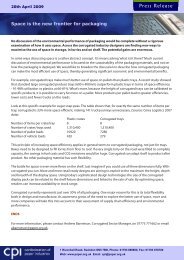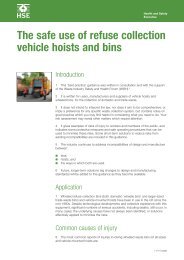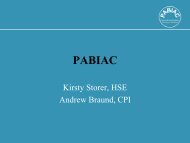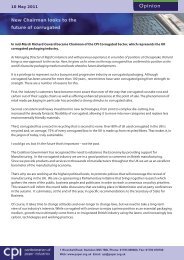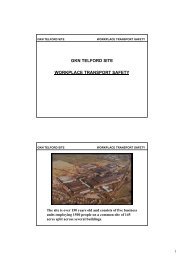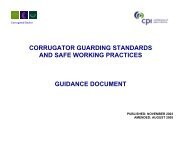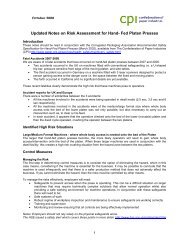Industry guideline for the Compliance of Paper & Board ... - cepi
Industry guideline for the Compliance of Paper & Board ... - cepi
Industry guideline for the Compliance of Paper & Board ... - cepi
You also want an ePaper? Increase the reach of your titles
YUMPU automatically turns print PDFs into web optimized ePapers that Google loves.
8<br />
packaging LAYERS NOT ACTUALLY IN FOOD<br />
CONTACT<br />
Regulation 1935/2004 applies to materials and articles in contact with food, or that “can<br />
reasonably be expected to be brought into contact with or to transfer <strong>the</strong>ir constituents to food<br />
under normal or <strong>for</strong>eseeable conditions <strong>of</strong> use” (Article 1 (c)). This means that <strong>the</strong> Regulation<br />
does not just apply to <strong>the</strong> packaging layer actually in contact with <strong>the</strong> food. There<strong>for</strong>e a<br />
judgement needs to be made on whe<strong>the</strong>r or not <strong>the</strong> layers <strong>of</strong> packaging which are not actually<br />
in contact with <strong>the</strong> food still fall within <strong>the</strong> scope <strong>of</strong> <strong>the</strong> Regulation because <strong>of</strong> a transfer <strong>of</strong><br />
constituents.<br />
In many applications <strong>the</strong> packaging actually in contact with <strong>the</strong> food very obviously provides a<br />
complete barrier (examples <strong>of</strong> such packaging include glass bottles and metal cans) and <strong>the</strong><br />
paper and board packaging used in subsequent layers does not fall within <strong>the</strong> scope <strong>of</strong> this<br />
Regulation<br />
In o<strong>the</strong>r applications, <strong>for</strong> instance when <strong>the</strong> packaging actually in contact with <strong>the</strong> food is a layer<br />
which may allow transfer or <strong>the</strong> food being packed is particularly susceptible to organoleptic<br />
changes, <strong>the</strong> Regulation may apply. The packaging manufacturer is not normally in a position to<br />
assess <strong>the</strong> interactions which may occur given <strong>the</strong> diversity <strong>of</strong> food packed in similar containers<br />
and <strong>the</strong> complexity <strong>of</strong> <strong>the</strong> interactions particularly relating to taint and odour. Thus, while <strong>the</strong><br />
manufacturer <strong>of</strong> a specific part <strong>of</strong> <strong>the</strong> packaging system will be in a position to give assurances on<br />
<strong>the</strong> constituents <strong>of</strong> <strong>the</strong> that part <strong>of</strong> <strong>the</strong> packaging system, <strong>the</strong> user <strong>of</strong> <strong>the</strong> packaging, (commonly<br />
<strong>the</strong> packer/filler) should conduct a hazard analysis and risk assessment <strong>of</strong> <strong>the</strong> ultimate suitability<br />
<strong>of</strong> <strong>the</strong> entire packaging system <strong>for</strong> <strong>the</strong> food being packed, if necessary in conjunction with <strong>the</strong><br />
relevant packaging manufacturers. If it is decided that paper and board packaging is within <strong>the</strong><br />
scope <strong>of</strong> <strong>the</strong> Regulation <strong>the</strong>n this Guideline shall apply.<br />
15


